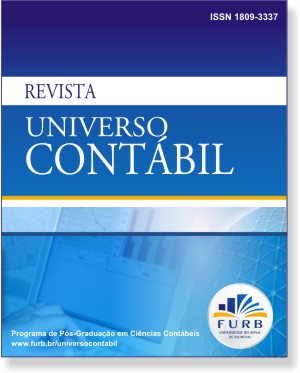CREDIT RISK, WORKING CAPITAL AND BUSINESS SOLVENCY: A STUDY OF THE BRAZILIAN COPPER TRANSFORMATION INDUSTRY
DOI:
https://doi.org/10.4270/ruc.20084Keywords:
Risco de crédito, Inadimplência, Demonstrações contábeis, Capital de giro.Abstract
The availability of credit for an industry is directly affected directly by the insolvency index; knowing its causes helps to prevent its incidence. The objective of the paper consisted in identifying common factors that had generated the forced agreement of three companies from the Brazilian copper wires and cables industry in 2002. Identifying these causes is useful, to the measure that it serves as a learning tool for new credit ratings and for the company’s financial management. The specific objectives were to identify the causes of the insolvency of the three companies involved, to verify the contributions of the traditional and dynamic analyses of the financial statements for this identification and to elaborate a synthesis table on the coincident causes. The analyses make it possible to identify the companies’ financing and applications resources structures, as well as their operational performances in the previous five years before the forced agreement order. The ratios groups found disclosed high indebtedness, unpredictable liquidity and activity ratios, low return on capital and absence of working capital sufficient enough to keep up the companies’ operational activity. The common determinative factors of the forced agreement order were: high financial leverage, absence of return on capital and poor management of working capital.Downloads
Download data is not yet available.
Downloads
How to Cite
Souza, S. M. de, & Bruni, A. L. (2008). CREDIT RISK, WORKING CAPITAL AND BUSINESS SOLVENCY: A STUDY OF THE BRAZILIAN COPPER TRANSFORMATION INDUSTRY. Revista Universo Contábil, 4(2), 59–74. https://doi.org/10.4270/ruc.20084
Issue
Section
National Section
License
The copyright for papers published in this journal belong to the author, with rights of first publication for the journal. As the papers appears in this publicly accessed journal, the papers are for free use, receiving their credit, in educational and non-commercial uses. The journal will allow the use of the papers published for non-commercial purposes, including the right to send the paper to publicly accessed databases.


